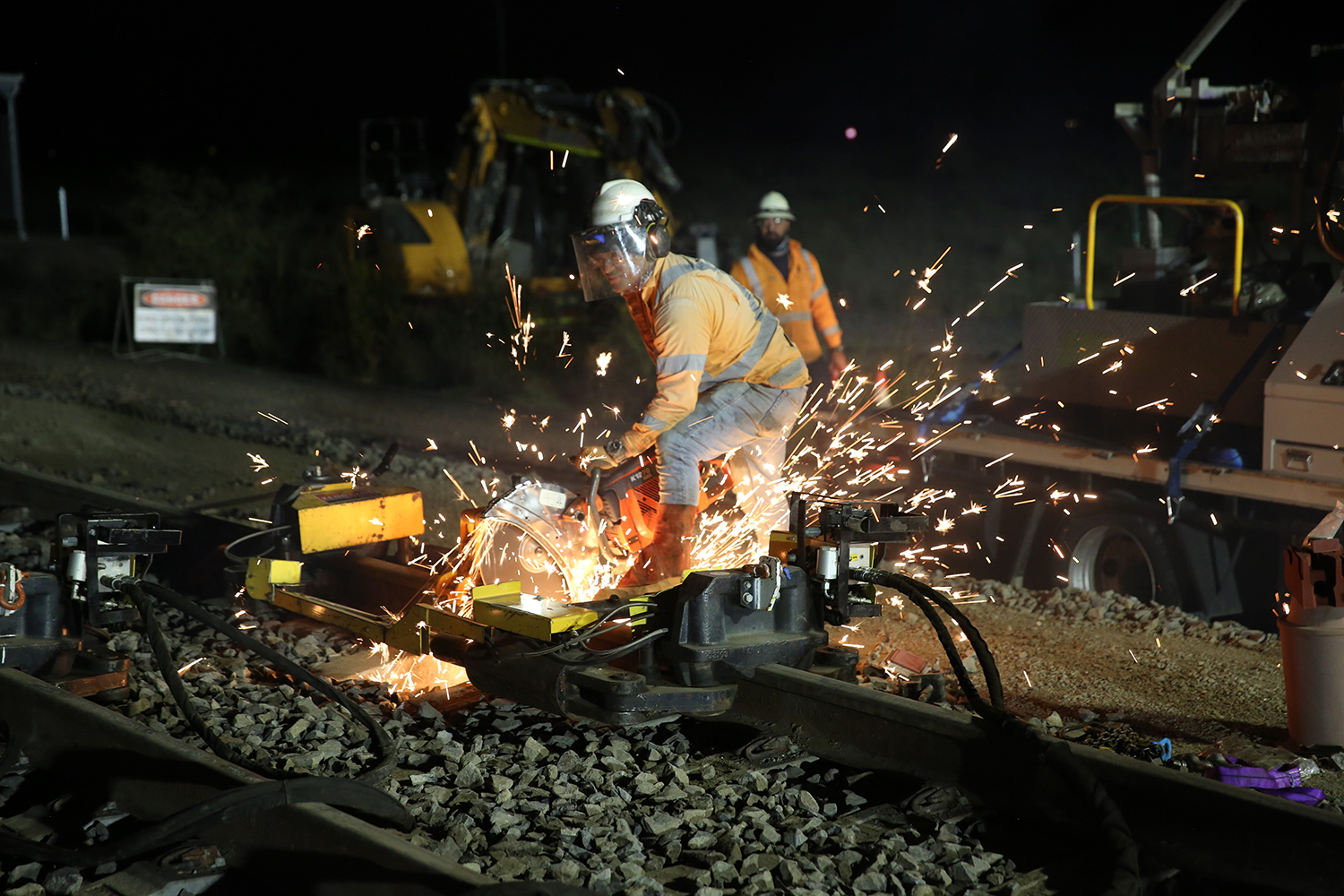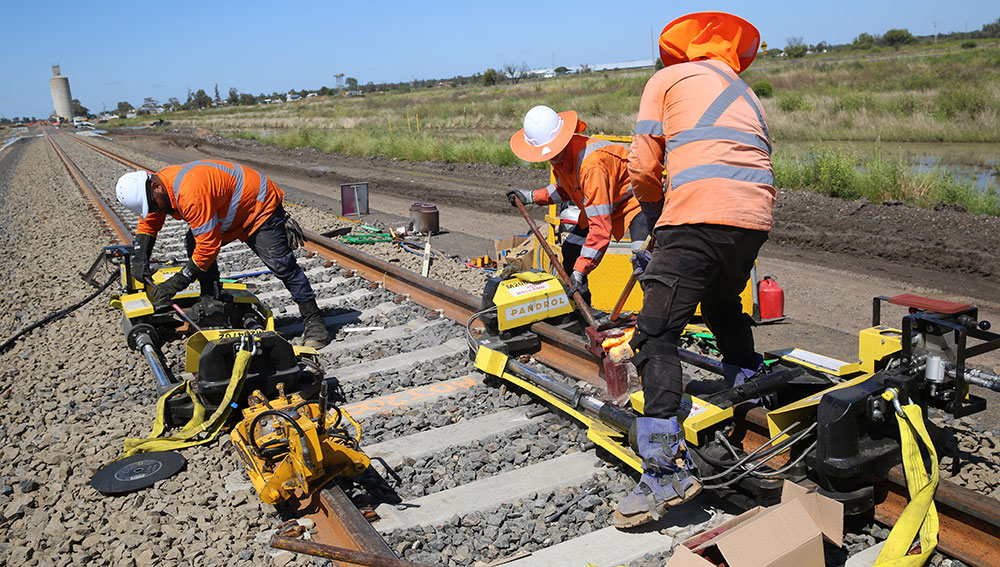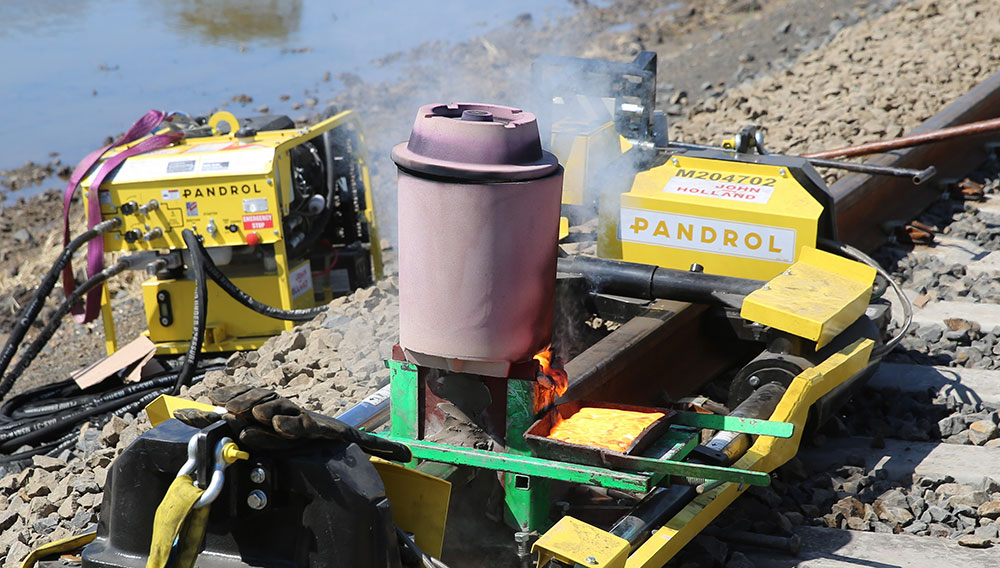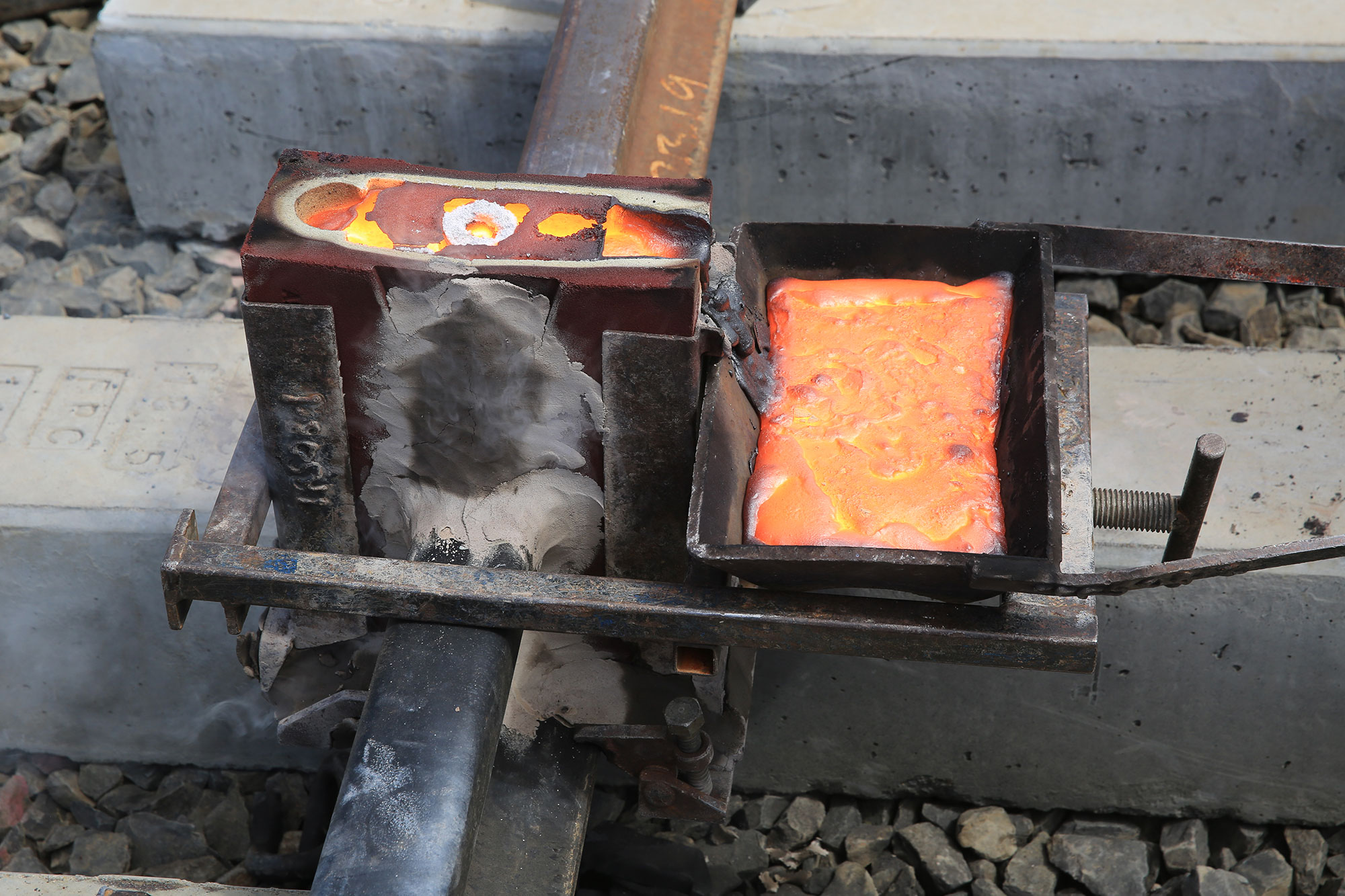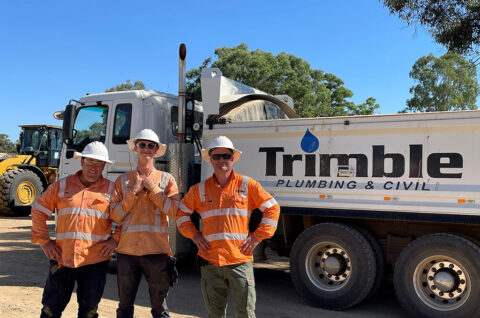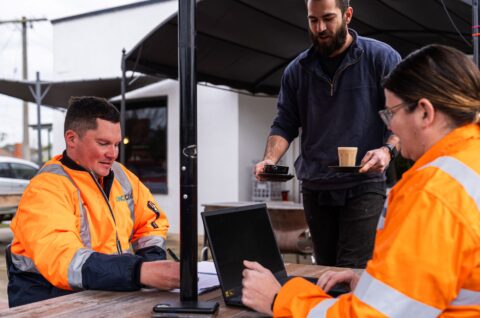What is rail destressing in railway construction?
Destressing is the process of conditioning the steel rail so it can cope better with temperature extremes. It is one of the final steps performed by crews to prepare the rail for operation.
June 14, 2024
The temperature of the rail track can have a big impact on its longevity. The optimum, or stress-free, temperature for steel rail is 38 degrees Celsius (C). When it gets too hot or too cold the rail becomes stressed:
- Too much heat causes the rail to expand, buckle and move out of alignment.
- When the rail gets too cold it contracts and this can cause it to snap.
Rail destressing must be performed when the rail’s temperature is at or below 38C – so the work is very weather dependent.
Rail destressing procedure:
- A small piece of the rail is cut out of the middle of a section (up to 2km long).
- The two lengths are pulled and stretched towards each other by a machine called a tensor.
- When they reach the target stretch point the two pieces are welded together using a special process called ‘thermit welding’.
What is thermit welding?
The welding that is performed to attach two pieces of rail is no ordinary welding. The process is called thermit welding:
- a sand mould is placed on the steel rails
- thermite (a hot mix of metal powder and metal oxide) is poured into the mould
- the thermite transforms into molten steel and slag, reaching temperatures of 600C
- the hot thermite fuses the two pieces of rail together
- after about five minutes, the sand mould is then dismantled to reveal the weld
- the weld is then grinded to leave a smooth track.
Inland Rail is a 1,600km freight rail line that will connect Melbourne and Brisbane via regional Victoria, New South Wales and Queensland.
